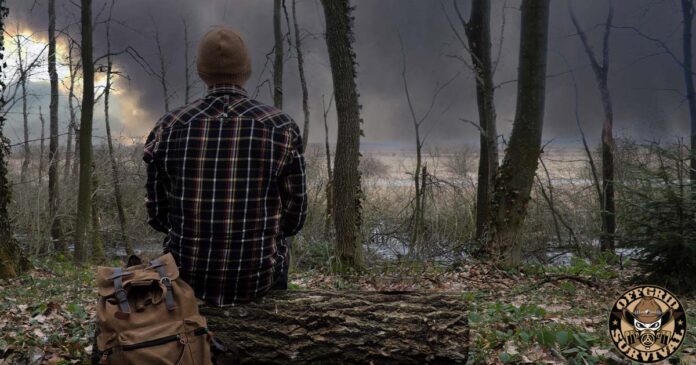
In today’s digital age, the conveniences of modern technology have led many to neglect basic survival skills, deemed archaic and unnecessary. But what happens when your technology fails you, and you find yourself stranded in an unforgiving natural environment?
Let’s take a look at the know-how needed to survive and thrive when your outdoor adventure turns into a fight to survive.
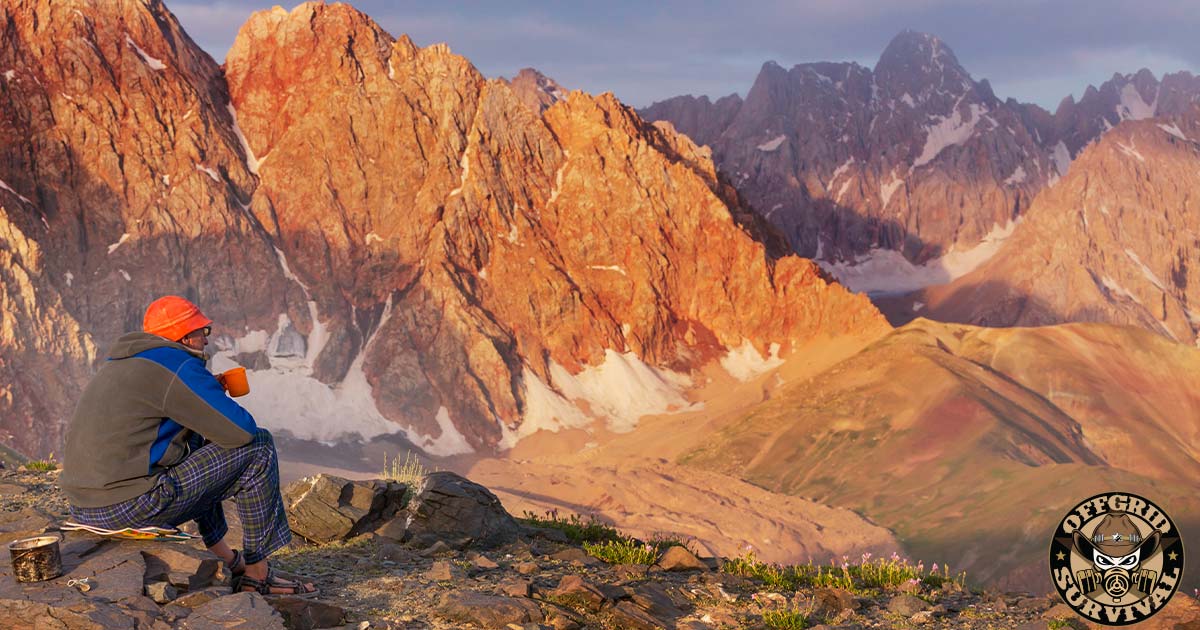
We start with one of the most important aspects of survival: your mindset. Perhaps one of the most underemphasized aspects of survival is the mental state of the person trying to survive. Throughout history, man has endured the unthinkable. Whether it’s surviving the unthinkable conditions in Nazi German or surviving a shipwreck in one of the harshest environments in the world, The will to survive is often the key ingredient that determines whether someone lives or dies.
Man can live about forty days without food, about three days without water, about eight minutes without air, but only for one second without hope.
The following articles can help you understand the role of the mind in survival situations and help battle-harden your will to survive.
- The Will to Survive: Ernest Shackleton and the Crew of the Endurance: Perhaps one the most incredible survival stories ever told, the story of Ernest Shackleton and the crew of the Endurance shows how the will to survive can help people live through conditions that most would consider impossible.
- Mastering the Psychology of Survival – Really being prepared to survive, means being able to control your fears, your emotions and your ego.
- Cultivate a positive mental attitude . The ability to maintain a positive mental attitude during a survival situation is something that needs to be taken seriously.
- Mindful Preparation: Surviving Traumatic Events starts with Developing the Right Mindset. On most survival sites, the main focus is often on things like gear, survival skills, and emergency planning; while those things are extremely important and will make surviving a lot easier, there’s one thing that’s often overlooked that really is the key to survival: Mental Preparedness.
As Navy Seal Marcus Luttrell says, “Being afraid is a state of paralysis in which you can’t do anything.” Overcoming fear and panic is critical for survival. The human mind can be trained to handle stressful situations with focused breathing techniques, preparedness drills, and mental exercises designed to enhance one’s situational awareness and cognitive flexibility.
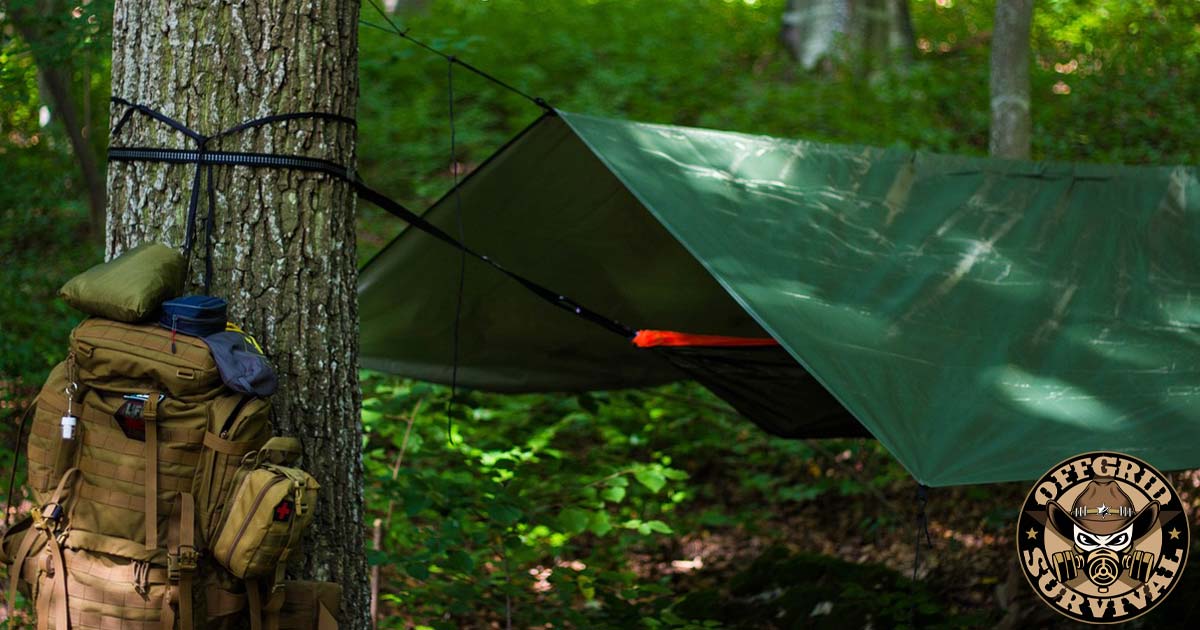
Now that we have talked about mindset, let’s look at another piece of the equation that we think is just as important: KNOWLEDGE. Knowledge if the key to survival; without it, all the fancy gear in the world is worth jack shit!
But knowledge means not only reading books and survival websites but getting out there and putting what you’ve read to use in a controlled environment. The old saying, “Practice makes perfect,” is the key to turning your knowledge into an asset once things go bad.
Building a Shelter: The Critical Role of Shelter in Staying Alive Outdoors
Extreme weather conditions like rain, snow, sun, and wind can be life-threatening. A well-built shelter can offer protection from the elements, helping to regulate body temperature and reduce the risk of hypothermia or heatstroke.
A good shelter can also:
- Defend against Wildlife Threats: A secure shelter can offer protection from wildlife, like predators and insects.
- Rest and Recovery: Physical and mental exhaustion can set in quickly in survival situations. A shelter offers a place to rest, sleep, and recover, which is critical for maintaining your energy levels and mindset.
- Emotional Well-being: Building a shelter can provide a psychological boost. The feeling of having a ‘home base’ in a stressful environment can be comforting and help imrove mental health, supporting longer-term survival.
- Concentration of Resources: Having a shelter allows you to establish a base of operations to focus on other survival tasks such as gathering food, treating water, and planning for rescue or travel.
Wilderness Survival Shelter Tips
Choose Your Location Wisely
Location is everything when it comes to building a wilderness shelter. Higher ground is generally safer as it’s less prone to flooding and may provide a vantage point for spotting rescue teams. However, remember that higher altitudes can also mean colder temperatures. Look for areas that offer protection from the wind and weather, and keep an eye out for natural shelters like caves or large boulders and trees that can be used to build off of.
Building Techniques: The Lean-To and Beyond
The lean-to is one of the simplest shelters you can construct. Prop a long branch against a tree and lay smaller branches against it at an angle. You can then insulate your shelter with leaves, moss, or any other insulating material you can find. But remember, the lean-to is just one option. You might also consider more advanced shelters like debris huts or even snow shelters if you find yourself in a winter survival scenario.
- Light Hiking – Tarp Shelters: good tarp is both lighter and cheaper than the even the lightest of tents and has a number of advantages that make it much more attractive to light backpackers.
- 6 Wilderness Survival Shelters: Check out these real-world Survival Shelters; they will give you a good idea of what’s possible and can give you a good starting point to go out there and practice.
The Vital Role of Fire
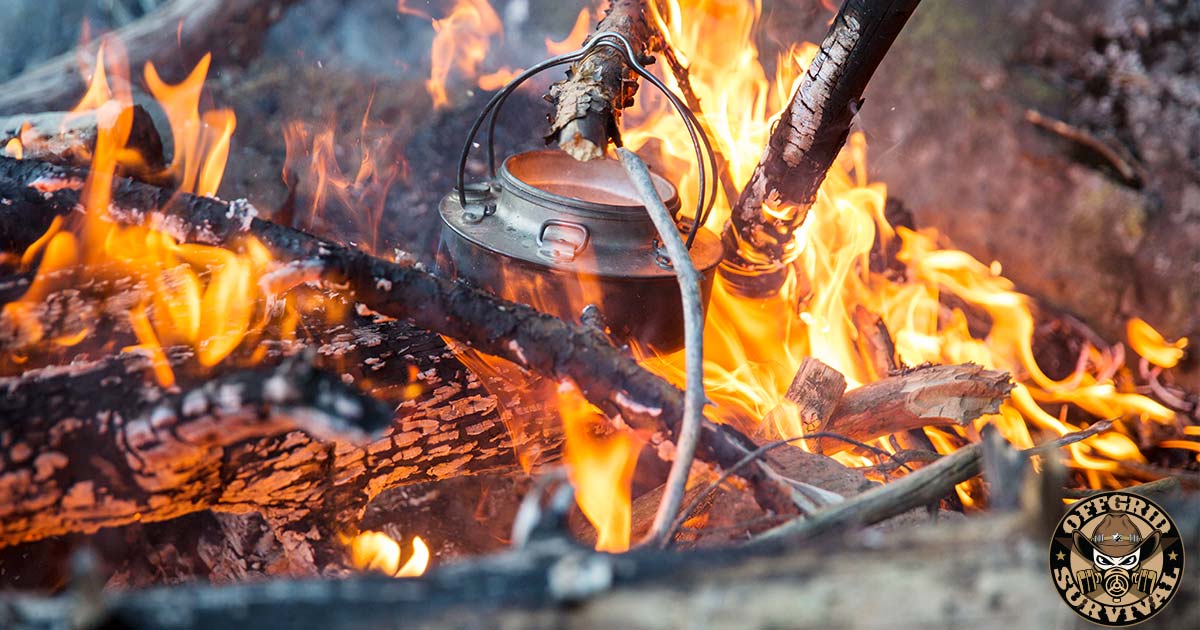
Fire is much more than just a heat source; it’s also a morale booster, a means to purify water, and a way to signal for help. One of the most important skills for an outdoorsman or survivalist to master is the art of building fires.
You should always have at least two methods of starting a fire with you. Here is some gear you should think about keeping in your wilderness pack.
While traditional fire-starting tools like flint and steel or waterproof matches can be great options, having a backup is always a good idea. Lighters, for instance, make things much easier during a stressful situation.
A survival lighter should be weatherproof, windproof and waterproof; it should also be made of high-quality materials that will ensure it lasts and works when you really need it. Keep in mind, the environments that you are going to be starting fires in is an important consideration when choosing which type of lighter to go with.
How to Find Water in the Wilderness
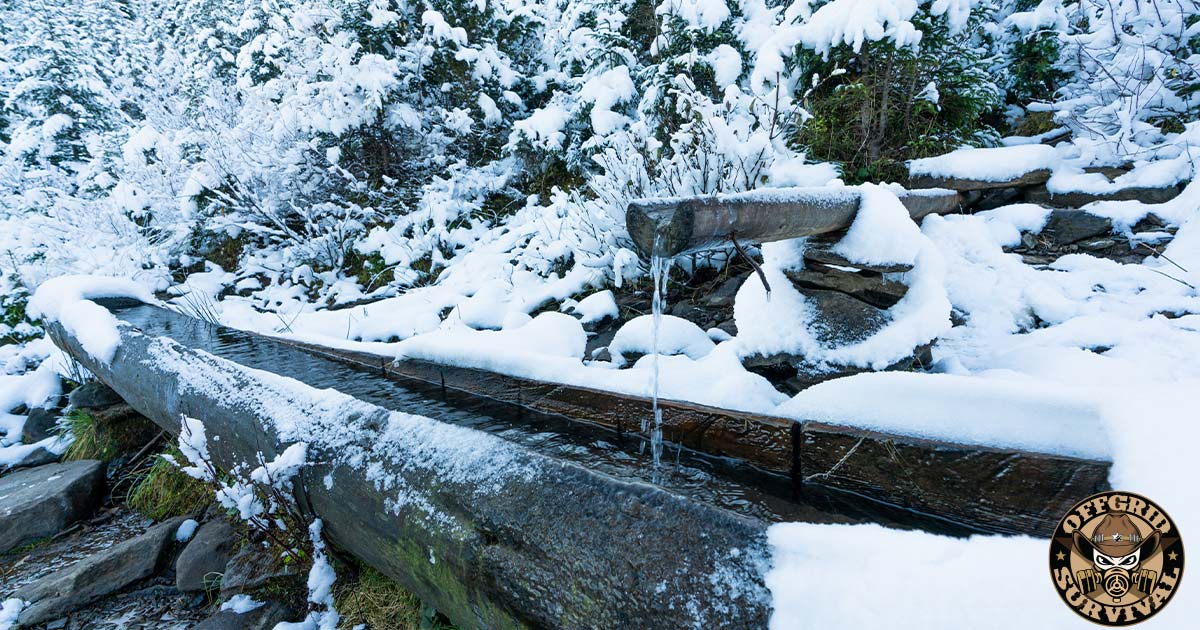
Identifying and Accessing Freshwater Sources
Finding water is a priority during wilderness expeditions, given that humans can only survive for three days without it. How do you go about finding water in the wild? Initially, your senses are your primary tool. A useful strategy is to scout the environment thoroughly. Generally, water runs downhill, so, following valleys and other low ground can often lead to water.
It is essential to identify sources that are likely to offer clean water, such as mountain streams and underground reservoirs. However, not all freshwater is safe to drink; some may contain harmful contaminants. That’s why you should always purify the water you find.
Water Collection Methods
- Natural Water Bodies: Start with obvious sources like streams, rivers, and lakes. Flowing water in small streams is your best bet, followed by rivers and lakes. Observing animal behavior and their paths might lead you to these sources.
- Rainwater: Collecting rainwater is a relatively safe method to secure drinkable water. It can be done using available containers or by setting up a poncho or a tarp to collect the rain.
- Dew: You can collect heavy morning dew using absorbent clothes or fine grass. Walk through meadows early in the morning to gather dew and wring out the water.
- Vegetation: Utilize fruits, vegetables, and plants, which naturally store water. Smash them to extract liquid, being careful to avoid poisonous plants.
Other Water Collection Techniques
- Plant Transpiration: This method involves trapping the moisture plants release using a bag. The moisture collected can be consumed, but avoid using this technique on poisonous plants.
- Tree Crotches and Rock Crevices: Collect water accumulated in tree crotches and rock crevices using a cloth to absorb the moisture and then wring it out.
- Underground Still: Creating an underground still can offer a reliable water source. The setup involves a container, clear plastic sheeting, and a digging tool, among other things, and it leverages the moisture in the ground and the sun’s heat to produce condensation.
Environment-Specific Tips
- Cold and Snowy Regions: In such areas, melting snow and ice can provide water. However, always melt and purify this water before consuming it to avoid lowering your body temperature.
- Desert Region: In arid environments, digging wells in damp areas or collecting condensation from metal surfaces are viable options. Look for trees such as cottonwoods, sycamores, willows or tamarisks – these are areas with a water source or where water may accumulate.
An adult can survive up to three weeks without food but only three days without water. That is why finding a safe water source should be one of your top concerns in a survival situation.
Best Methods to Purify Water in the Wild
Boiling is the safest and most effective method to purify water, but if this is not possible, other methods like filtration and chemical purification can be considered. Natural sources like rainwater, snow, and dew can also be relatively safe to consume.
You may need to rely on unconventional water sources in more challenging situations. Certain cacti and vines can yield drinkable water when cut open or wrung out. Be cautious, however, as not all plants offer safe hydration; some may even be poisonous.
In my opinion, a water filter is one of you’re most important pieces of gear you can carry. Without water, your screwed; if you do find water, without proper filtration you still might be in trouble.
Given that “knowledge is power,” education and preparation are your best allies in survival.

In unforgiving wilderness environments, the right knowledge can quite literally be a lifesaver. From knowing how to find and purify water to building a shelter with the natural resources available, every bit of knowledge carries enormous value.
- Enroll in Survival Courses: Courses such as those offered by former Special Forces officers or expert survival guides can provide not just theoretical knowledge but also practical training in bushcraft skills, first aid, and advanced navigation techniques.
- Basic Training: Most survival situations can be prevented or survived by learning the basics and then doing them over and over again. Yes there are certain skills that go beyond the basics, but the basics are the foundation that everything else is built upon.
- Good old fashion camping: Camping is a great way to discover how you and your family will do with limited resources, a lack of power, and hopefully without a bunch of tech gadgets. If you have kids, camping is a great way to introduce them to the idea of preparedness, in a way that will excite them and help them remember the lessons.
Some preparedness skills that you can practice while you’re out camping:
- Practice using a Signal Mirror – During this exercise, take the time to talk to your children about the importance of communication skills in the real-world.
- Learn how to Start a Fire – Take the time to practice making a fire with a variety of different methods. In a wilderness survival situation, knowing how to build and maintain a fire is probably one of the most important skills you can have.
- Learn how to Construct a Good Tarp Shelter – Even if you’re tent camping, or “roughing it” inside your luxury RV, take the time to practice making a couple of different tarp shelters. They’re fun to make, and will give you one extra skill to add to your preparedness arsenal.
- Practice Making Survival Traps and Snares – During a long-term survival situation, one of the biggest challenges you’re going to face is finding and procuring food. Learning how to build traps and snares is a skill that one day could come in very handy.

When venturing into the wilderness for hiking, backpacking, or any outdoor adventure, the importance of your gear cannot be overstated. However, it’s not merely about owning cutting-edge gadgets or high-end equipment. The real art lies in choosing gear that aligns with your specific trip, and that process begins well before you set foot outside. Thoughtful pre-trip planning is the cornerstone for ensuring your journey is not just enjoyable but also safe.
Selecting the right equipment is far from arbitrary; it involves a thorough assessment of the environmental conditions and challenges that may lie ahead. Start with essentials like a reliable backpack, sturdy hiking boots, and weather-appropriate clothing. Consider the duration of your trip, the availability of water sources, and the potential need for shelter. Do you need a tent, sleeping bag, or camp stove? Are trekking poles, a GPS device, or a first aid kit necessary for your trip? Tailor your gear list to meet the specific requirements of your adventure.
Prioritize essentials like a good-quality knife, a multi-tool, a topographic map, and a compass. Additional items like a whistle for signaling, a first aid kit, and lightweight food items are also important.
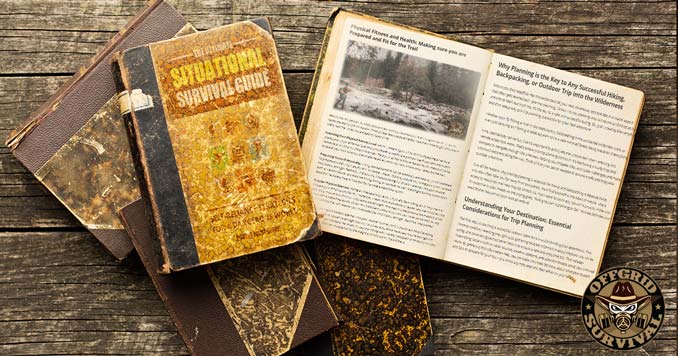
The SAS Survival Handbook by John ‘Lofty’ Wiseman: This classic wilderness survival guide is a comprehensive resource for outdoor enthusiasts. It covers various topics, including navigation, shelter building, firemaking, food procurement, first aid, and more. This book, written by a former SAS soldier, provides practical advice and techniques based on real-world survival experiences.
Wilderness Medicine: Beyond First Aid by William W. Forgey, M.D.: This book is a must-have for outdoor adventurers who want to be prepared for medical emergencies in remote wilderness settings. It covers essential medical knowledge and skills needed to handle injuries and illnesses in the wilderness, including assessment, treatment, and evacuation. Written by an experienced wilderness medicine expert, this book provides valuable information on managing medical emergencies in the backcountry.
The Backpacker’s Field Manual: A Comprehensive Guide to Mastering Backcountry Skills by Rick Curtis: This comprehensive guide is packed with practical advice on backcountry skills, including navigation, shelter building, water purification, food procurement, and more. It also covers essential topics such as risk management, trip planning, and emergency preparedness. This book, written by an experienced outdoor educator, provides essential information for backpackers and hikers looking to enhance their outdoor skills.
The Complete Idiot’s Guide to Backpacking and Hiking by Jason Stevenson: This beginner-friendly guide provides a comprehensive overview of backpacking and hiking, including trip planning, gear selection, navigation, camping skills, and wilderness safety. It covers various terrain and environments and provides practical tips and advice for enjoyable and safe outdoor adventures. This book is a great starting point for those new to backpacking and hiking.
The Ultimate Situational Survival Guide by Robert Richardson. While this might not be one you expect on a wilderness survival book list, we’ve encountered our fair share of backwoods methheads, pot growers, and complete psychopaths in areas where you might not expect them. This is a good and practical resource for outdoor enthusiasts who want to be prepared for unexpected situations, including encounters with criminals in the wilderness. This book covers various survival scenarios, including self-defense techniques, strategies for dealing with hostile individuals or groups, and ways to protect yourself and your belongings.
The Bushcraft Boxed Set: Bushcraft 101; Advanced Bushcraft; The Bushcraft Field Guide to Trapping, Gathering, & Cooking in the Wild; Bushcraft First Aid by Author: Dave Canterbury. This comprehensive boxed set by Dave Canterbury is a must-have for anyone interested in wilderness survival, bushcraft skills, and first aid in the wild. It is an incredible resource for outdoor adventurers who want to learn how to effectively survive and thrive in the wilderness and ensure they have the proper knowledge and skills to handle emergencies and unexpected situations.
In a world overwhelmingly driven by technology, it’s easy to underestimate the importance of basic survival skills. But these skills can make all the difference in a crisis. Whether you find yourself lost, stranded, or faced with unexpected challenges, equipping yourself with survival knowledge can turn a shitty situation into a story of resilience and survival. The wilderness may be unforgiving, but you can survive its fury with the right mindset, skills, and preparation.


